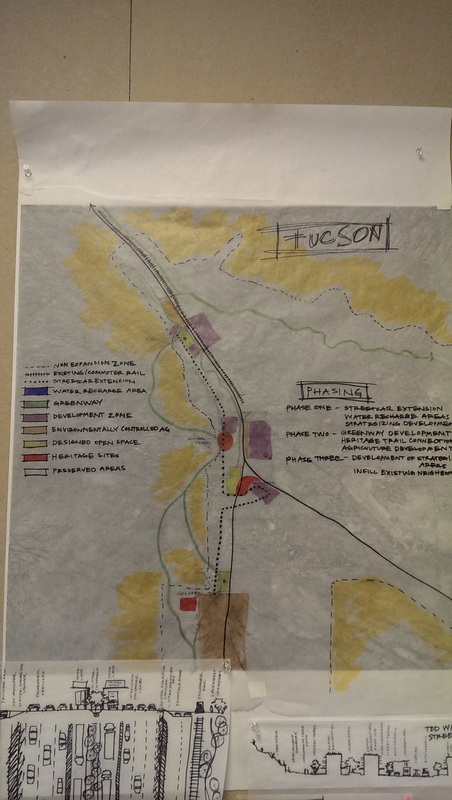I-II SUPERCORRIDOR
|
How do we re-imagine our highway infrastructure so that it moves away from the current flat-and-black model to anticipate future use, while giving back to the communities that surround it? This site design responds to the 7 Criteria of Next Generation Infrastructure as put forth by the Sustainable Cities Project at the University of Arizona.
Multi-Functional: this site combines solar energy production, data, gathering & transferring, freight movement, public recreation opportunities & water harvesting techniques.
Public: All site components innate encourage & promote public interaction & visibility, while providing public amenities to benefit the surrounding communities. Visible: visibility is the whole intent of the project, with the site designed to celebrate the infrastructure rather than treating it as an afterthought. Productive: each tailings pile has the capacity to produce enough solar power to provide for the needs of all of Santa Cruz county plus additional power. Local, Flexible, Adaptable: this site responds to a uniquely local site condition, providing energy, water, & data to the local community, while the physical infrastructure is built to anticipate future alternative modes of transportation. Eco-Economy: This site provides a model for the utilization of disturbed landscapes in potential for power generation, providing revenue ($100mil+ annually) jobs & turns a community detriment into an asset. Design Prototype: This site provides a design prototype of integrating uses of surrounding landscape into the infrastructure itself. Tech: This site incorporates multimodal transportation, collects & transfers energy & water to surrounding communities, utilizes new advances in energy production, and anticipates future models of freight & passenger transportation. |
